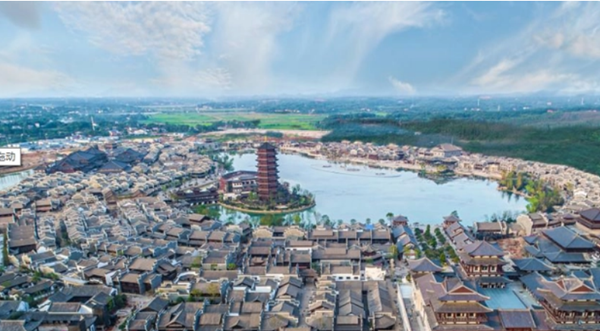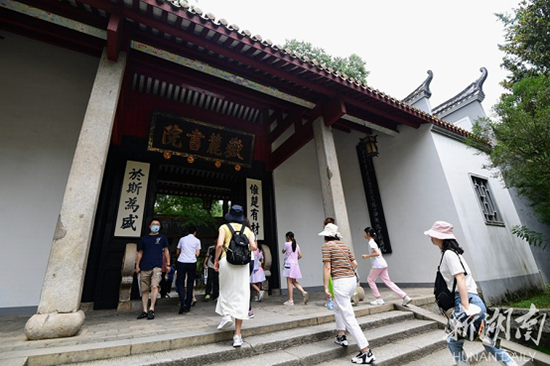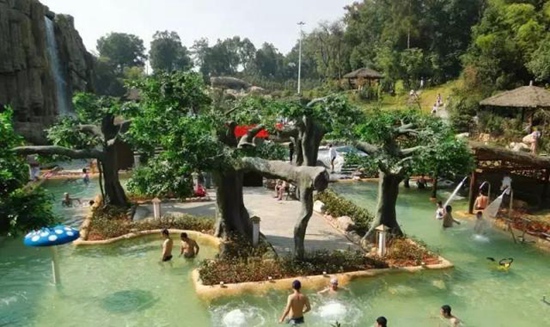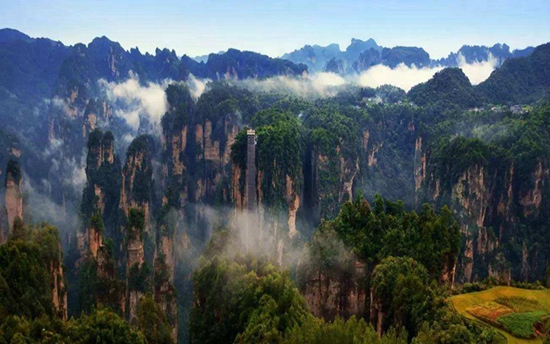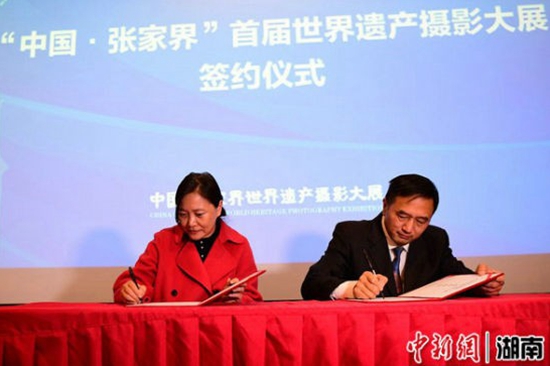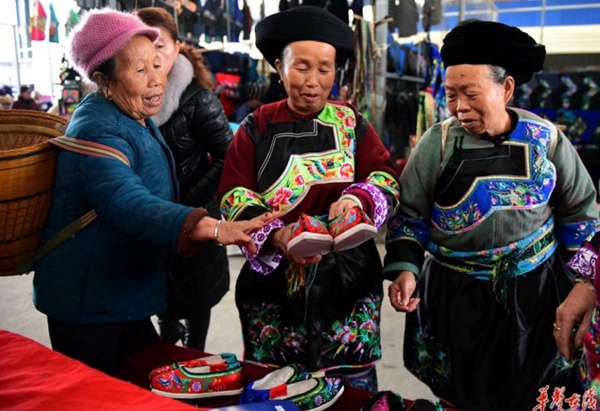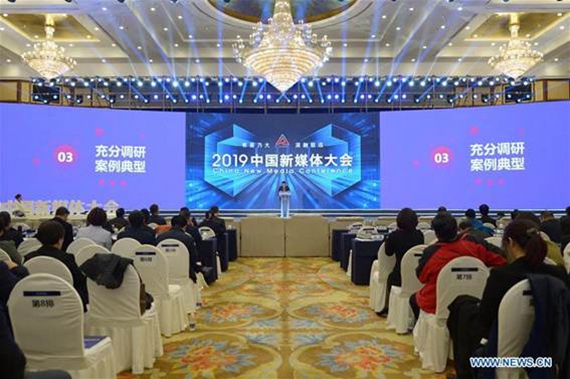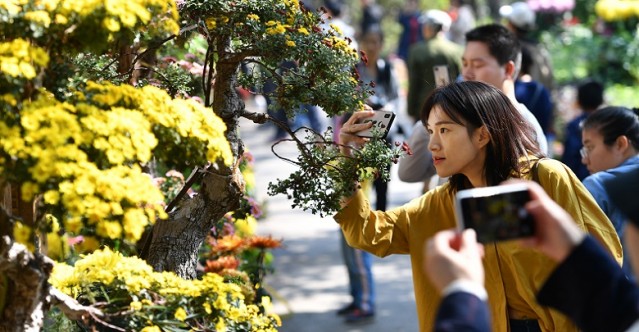The Former Residence of Chairman Mao is located at Shangwu Ground, Tudi Chong, Shaoshan village, Shaoshan Township. It lies on the south and faces on the north, the building structure is like Chinese character "凹". On the east, it belongs to Mao's family, on the other side of the house is the neighbor's, they shared the central room. On Dec.26, 1893, Mao Zedong was born in the house. We can see Mao's family photo, everyday household utensils, all kinds of farm tools, and shoulder pole, bucket, hoe that used by Mao Zedong when he was young.
As the hometown of the great man of the generation, now Shaoshan is one of the important tourist zones in Hunan province. The major tourist sites including the Former residence of Chairman Mao, Memorial Hall of Mao Zedong, Water-dripping Cave and Steles Forest of Mao's Poems, and so on.
Attractions:
The former residence of Chairman Mao
Shaoshan is a small mountain village about 100km southwest of Changsha, the capital of Hunan province, with some fairly beautiful scenery and a once typically Hunan village atmosphere, Shaoshan has been irreparably changed by history. On the 26th December 1893, a baby was born in a little house in this village, to a relatively wealthy peasant couple. The child was to grow up to become China's Great Helmsman, Chairman Mao Zedong, and it was in this region that he spent his childhood and youth, attending school and helping his father with his work.
The former residence of Chairman Mao is the most interesting site. Entered through a courtyard, the house is of a sunny yellow, mud brick walls, with a nicely thatched roof, and is found on a wooded hillside, above some lush paddy fields. There are 13 and one half rooms in the Former residence, which include one and half central room, a kitchen, a dining room, three family bedrooms and a guest room. Within the rooms are various personal effects of Mao and his parents, as well as photos from Mao's life.
This is the central room, used by two families: Mao's family and their neighbor. So we said that there is only one half of the central room belongs to Mao's family. And this is there kitchen, where Chairman Mao often helped his mother doing some housework in his childhood. Go through the kitchen was Chairman Mao's parent's bedroom, there are two photos of Chairman Mao's parents on the inner wall, and it was in this room where Chairman Mao was born.
Chairman Mao Memorial Hall
The Chairman Mao Memorial Hall commonly known as the Mausoleum of Mao Zedong, or the Mao Mausoleum, is the final resting place of Mao Zedong Chairman of the Politburo of the Communist Party of China from 1943 and the chairman of the Central Committee of the Communist Party of China from 1945 until his death.
Although Mao had wished to be cremated, his body was embalmed, and construction of a mausoleum began shortly after his death. This highly popular attraction is located in the middle of Tiananmen Square, in Beijing, the capital of China. On this site had previously stood the Gate of China, the southern (main) gate of the Imperial City during the Ming and Qing dynasties.
The remains of the Great Helmsman, as he is sometimes known, are on display for public viewing. People line up for hundreds of feet (dozens of meters) every day to see the former chairman, many paying tribute to him with flowers which can be rented at the entrance on the north side. There is a souvenir shop at the exit on the south side.
Comrade Mao Zedong Bronze Statue Square
Comrade Mao Zedong Bronze Statue Square was built at Chairman Mao's 100th birth anniversary in 1993. It is located in the center of the core scenic area of Shaoshan. It is the main site for domestic and overseas tourists to commemorate Comrade Mao Zedong, the venue for a variety of large-scale events, and the distribution center for visitors who tour Shaoshan. Comrade Mao Zedong Bronze Statue Square was reconstructed and extended at Chairman Mao's 115th birth anniversary in 2008. It is "Number One Project" in the Shaoshan major construction projects. Approved by the Central, "Small Displacement, Small Shift" program was used to renovate and expand Comrade Mao Zedong Bronze Statue Square based on the original one. After the reconstruction, the total area of the square is 100,000 square meters now and the height of Comrade Mao Zedong bronze statue is 10.1 meters tall including the foundation. Backed by Shaofeng and facing the former residence, People in this magnificent and solemn atmosphere can have a better understanding of the extraordinary spirit of the great man Mao.
The Dripping Water Cave
The Dripping Water Cave, about 3 km northwest of the village, is a very popular destination, possibly because of the fact that Mao allegedly spent 11 days here in the early days of the Cultural Revolution Years (1966-76), contemplating the unknown.
Shaoshan Steles Forest of Mao’s Poems
Mao Zedong's Poetry Forest of Stone Tablets is located half way up the mountain of Shaofeng and about 3 kilometers away from Mao Zedong's Former Residence. It was formally opened in 1993, with a total area of nearly 20,000 square meters. The whole garden is divided into five parts according to Mao's revolutionary career and four periods by the chronological order.
The first part: Mao Zedong's poetry written in his youth.
The second part: Mao Zedong's poetry written during the time of Great Revolution and the second Revolutionary War.
The third part: Mao Zedong's poetry written in the time of Long March of the Red Army, Anti-Japanese War, and the War of Liberation.
The fourth part: Mao Zedong's poetry written after the establishment of new China.
On hillside stood steles engraved with Mao’s fifty poems. Among them 28 is Mao’s original handwriting. Due to the poetic sentiment and picturesque layout, it is appraised as one of Hunan’s best scenic spots.
The Peak of Mount Shaoshan
Mount Shaoshan has an abundance of green and old trees. There are eight scenic spots and five marvelous spectacles. Tourists can climb to Shaoshan old temple on mountaintop while enjoying birds singing and pine trees whistling and the beautiful sceneries. Cableway is also available.
Travel tips:
This site is on the outskirts of Shaoshan (approximately 104 km outside of Changsha) and is easily reached by bus.
Huaminglou, Liu Shaoqi's former residence
Huaminglou is in a beautiful small town of South Changjiang. It is located o?n the bank of Jinjiang River, northeast border of Wangcheng County, in the southeast of Ningxiang County boundary, Hunan Province. Its neighboring is Xiangtan and Xiangxiang city in southwest and is 30 kilometers east from provincial capital Changsha. The distance from Mao Zedong's hometown, Shaoshan, is 37 kilometers on the south and is 30 kilometers west from the county.
Huaminglou scenic area occupies more than 670,000 square meters with the total floor space of 35,000 square meters. The main scenic spots are Liu Shaoqi's Former Residence, Memorial Hall, Bronze Statue Square, Exhibition Hall, Huaming Tower, Accomplishment Pavilion, Airplane Liu Shaoqi Had Taken, Ancestral Graves of Liu Shaoqi, Wang Guangmei's Tomb, Landscape Diagram of the Universe, etc. It has gained the honor of "the first batch national patriotic education bases," " the first batch national AAAA level traveling scenic spots," "one of Ten Chinese classics red scenic spots," so it is a revolutionary commemorating and traveling spot with national influence.
What to visit
Huaminglou is famous for it's the hometown of Liu Shaoqi - one of the great leaders in Chinese revolution, His former residence is surrounded by lots of trees, and there are more than 30 wood rooms in the courtyard. Apart from the living room, there is also reading room for children to study.
Memorial Museum
500 meters from Liu Shaoqi's former residence, there is a Memorial Museum in honor of him, in the museum there are more than 800 cultural relics and materials, including some of Liu Shaoqi's books and daily things.
Liu Shaoqi's Bronze Statue Square
Liu Shaoqi's Bronze Statue Square covers more than 8,000 square meters. The bronze statue was donated by the Chinese National General Labor Union, and sculptured carefully by famous sculptor Liu Kaiqu and Cheng Yunxian. The statue is 7.1 meters high (including the base) which implies two meanings. July 1st is the birthday of Communist Party of China, symbolizing Liu Shaoqi's outstanding contribution to Communist Party.
Meanwhile, Liu Shaoqi died at the age of 71, implicating his glorious and great life. The bronze statue was completed on November 24th, 1988. President Yang Shangkun unveiled it personally. In 1998, General Secretary of CPC and President Jiang Zeming inscribed for the bronze statue.
Huaming Park
Huaming Park occupies more than 130000 square meters. It's a park carries Chinese traditional virtues as the culture theme with the sites of Huaming Tower, Accomplishment Pavilion, Airplane Liu Shaoqi Had taken, Wande Tripod Cauldron, A-leaf Lake, etc. It opened in 2003.
Huaming Tower
Huaming Tower is a five storey tower with the height of one hundred feet. It is ancient dignified, grand and magnificent with jujube color corridors, carved pillars and drawings. The tower is decorated by the background of plum, orchid, bamboo, chrysanthemum and lotus, which implies the lofty thought of Liu Shaoqi for persisting in the truth and never changing his aspiration.
Airplane Liu Shaoqi Had Taken
Doyle -18-240 airplane is a turbine spiral medium range airliner imported from former Soviet Union in 1959. The fuselage is 36.9 meters. It has wingspan of 37.4 meters and weights 32 tons, which was the specified airplane for leaders of Communist Party and country. Liu Shaoqi, Zhou Enlai, Peng Zhen, Chen Yi all had taken this plane. It has accompanied Liu Shaoqi to participate in many important activities about foreign affairs. In 1963, Liu Shaoqi visited Indonesia, Burma, Cambodia and Vietnam by this plane. Moreover, Liu Shaoqi accompanied Jin Richeng to meet Mao Zedong from Beijing to Wuhan by the plane on the eve of discussion war between China and Soviet Union.
In December 2000, the National Bureau of Cultural Heritage organized some experts on revolutionary cultural heritage to appraise it. A document named was written to collect the plane Liu Shaoqi had taken. This specified plane is the true one after appraised by captain and mechanic who drove it before, so it has high historical value. The museum is authorized to preserve it as a precious cultural heritage. On September 2nd, 2003, the airplane successfully settled in Huaming Tower. On November 24th in the same year, it was opened to public formally. The plane is preserved completely. The cabin was separated into the first-class cabin, ordinary cabin, resting cabin, goods preservation cabin and toilets except for cockpit, the seats and military beds in cabins are the originals.
Airplane Liu Shaoqi Had Taken
The name of Accomplishment Pavilion comes from Liu Shaoqi's work Accomplishment of Members of Communist Party. Accomplishment Pavilion is composed of main pavilion, two courtyards and a small assembling square. There are original handwriting of outline on Accomplishment of Members of Communist Party, discussion accomplishment by celebrities in previous dynasties, the appraisal of three generations of leaders on Accomplishment of Members of Communist Party, and contemporary calligraphy and painting work of celebrities.
Travel Tips:
When to go
Changsha falls within the subtropical monsoon climate with distinct seasons and changing temperature. The annual temperature is 17.2℃. The weather of spring in Changsha is changeable; you need to wear thick clothes. The autumn begins from the middle of August. The weather is fine and the sky is clear. To sum up, September and October in autumn is the best time for traveling.
Traffic
There are coaches from Changsha to Ningxiang, and there are buses to huaminglou from Changsha, Ningxiang, Shaoshan. You can go there by bus.
It is about 50 kilometers apart from Changsha and the bus fare is around 20RMB. The Huaminglou town is the hometown of Liu Shaoqi, one of the main and respected leaders in China. All of the Huaminglou scenic area takes up 470,000 square meters and the admission fee is 30RMB.
the Former Residence of Chairman Mao is on the outskirts of Shaoshan (approximately 104 km outside of Changsha) and is easily reached by bus.You can first vist Liu Shaoqi's former residence and then take the bus from there to the Former Residence of Chairman Mao. It will take you 20 yuan and 30 mininutes.
